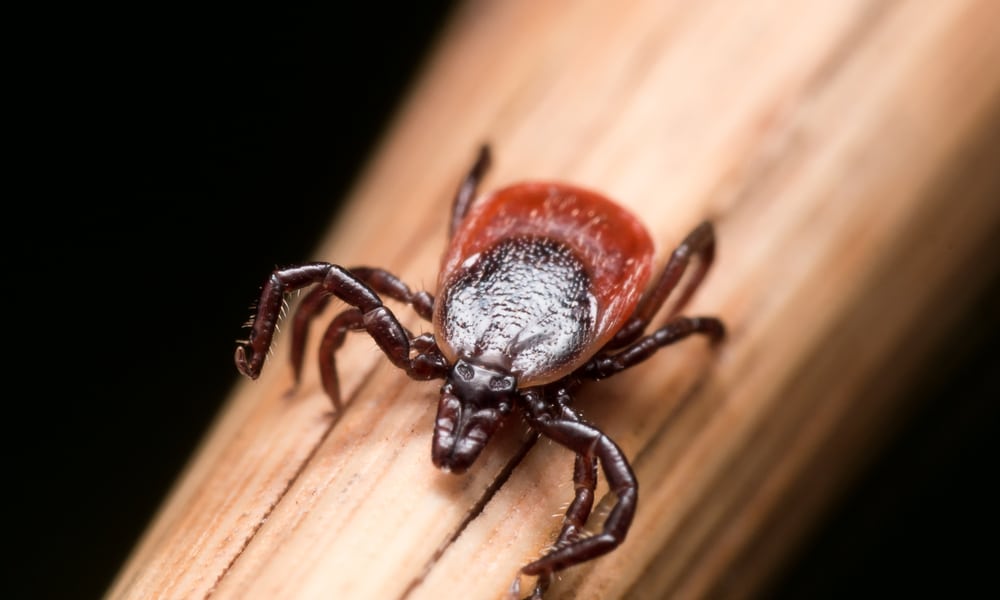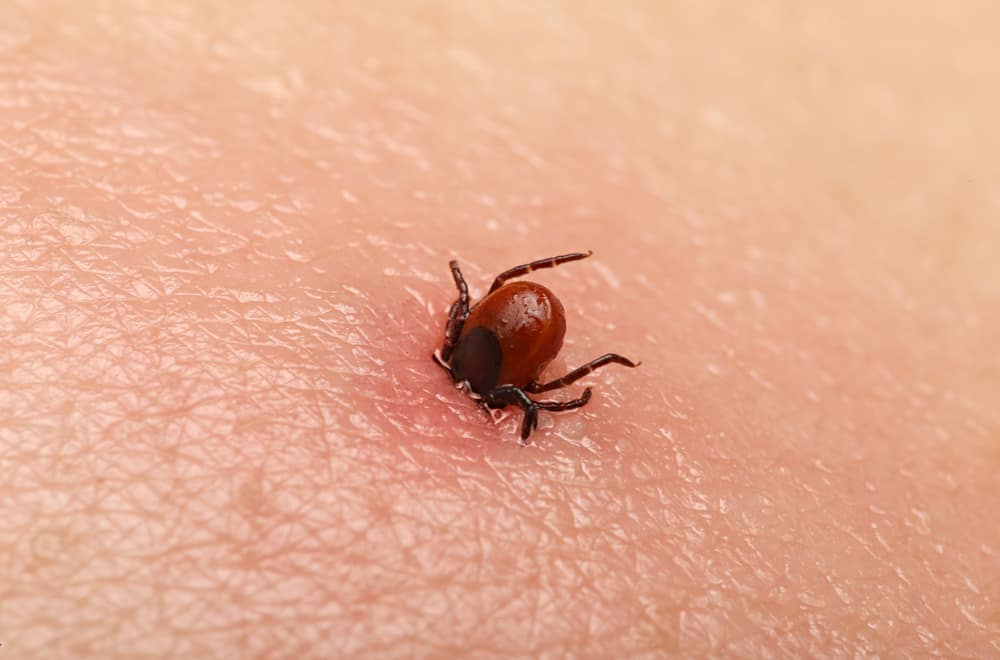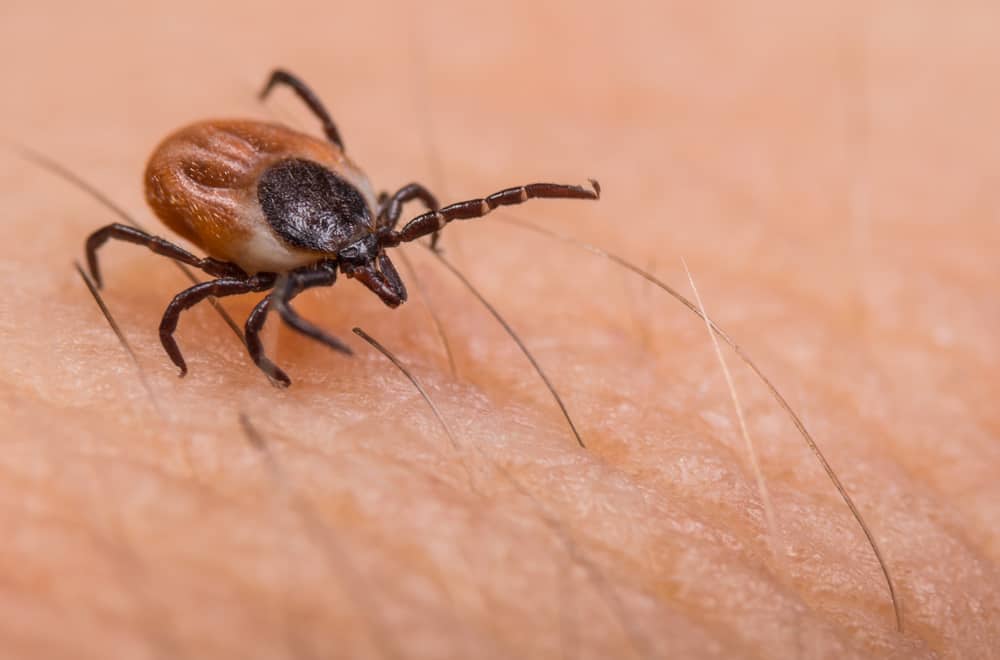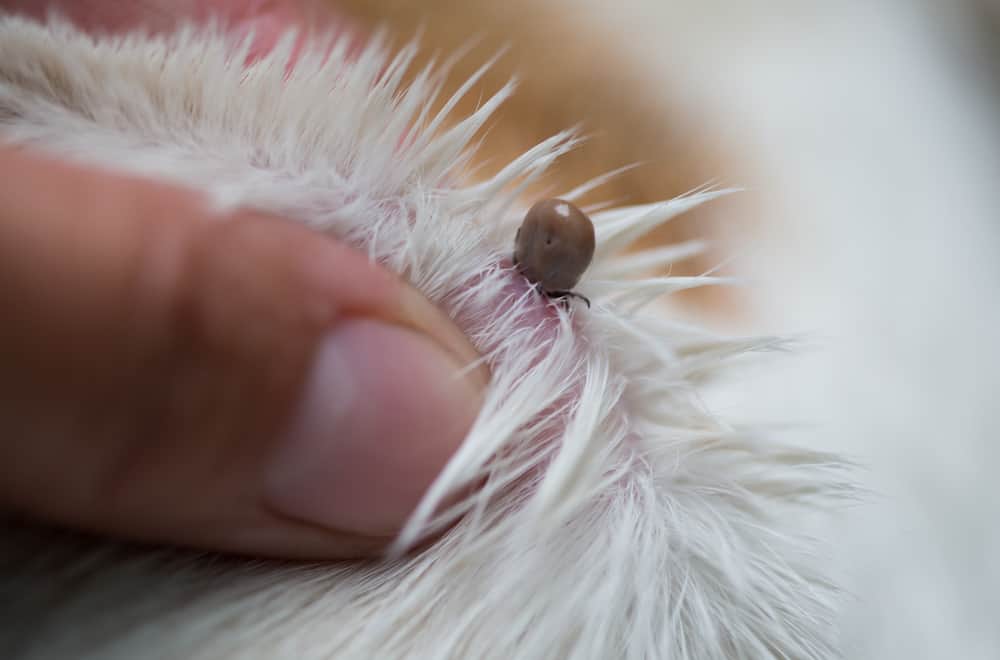A tick bite can make all our hiking and picnicking experience outdoor dull and disappointing. Ticks are obligate blood-feeder, and during the tick season, it is imperative to protect your young ones and pet from them.
Ticks are not only hated for biting, but they are also notorious for spreading human diseases. But how do they transmit diseases? Are they born with pathogens in the saliva? Well, to answer the questions, first, you need to know what organisms ticks feed on.
To your rescue, we’ve done all the difficult tasks for you. Read on to find out what do ticks feed on. But first, let’s start by discussing how these blood-sucking creatures look like.
What Do Ticks Look Like?
As female ticks lay thousands of eggs at once, the cluster is easy to see than tick themselves. The eggs are brownish-red in color. These translucently clear broods of eggs greatly resemble mini caviars.
Ticks don’t have typical nests. The female tick simply lays her eggs attached to a soft spot, where the brood stays stuck together unless they hatch.
Once hatched, the larval ticks are extremely small, around the size of a sand grain, ranging from around 0.5-1.5 mm. These larvas are pale in color and feature six legs.
Ticks in the nymph stage are slightly bigger, around the size of sesame seeds. These ticks are still less than 2 mm in size. However, unlike larval ticks, nymphs have eight legs.
Adult ticks are around the size of an apple seed. Females are around 2.7 mm in size, whereas males are relatively smaller. They also feature eight legs as in the nymph stage. However, one must remember that the size of engorged ticks is significantly bigger than their size when they’re unfed.
What Do Ticks Feed?
Ticks are sanguivorous, meaning they feed on blood. They need to feed on at least three hosts in their lifetime.
Their lifecycle consists of four phases: egg, larvae, nymph, and adult. Once they hatch, they must feed in order to molt into nymphs. From nymphs, they again feed to grow and develop into adult ticks.
Once adult, female ticks need to gorge on the blood from hosts one more time to be able to lay eggs. And they prefer to anchor to a different host species each time. Here are a few living beings that these tiny creatures like to relish.
1. Small mammals
Generally, ticks prefer to anchor to smaller mammals during their larval stage, and the most common species known to act as ticks’ hosts is white-footed mice. These mice are also notorious for transmitting Lyme disease and are the common culprit behind transmitting these pathogens to ticks.
Also, if they feed on monkeys, chipmunks, or shrews, the chances of them transmitting disease-causing pathogens to the next host are quite high.
However, if the ticks anchor to other small mammals such as raccoons and opossums, who have a low chance of transmitting disease, they’ll probably not transmit any disease to their next hosts. It is because ticks aren’t born with pathogens. Instead, they are responsible for carrying diseases from one host to the other during their lifetime.
2. Birds
Ticks also infest birds. If their initial host is robin, they can be the carrier of diseases. However, if they feed on catbirds or other birds with no infection, the possibility of them transmitting pathogens is quite low.
3. Reptiles
Ticks also feed on reptilian blood. One such common reptile associated with ticks are lizards. Lizards are also considered not to transmit any harmful pathogens to ticks. In fact, western fence lizards’ blood was actually found to clear Lyme infection from the ticks instead.
4. Bigger mammals
Bigger mammals that ticks feed on are deers, dogs, and also humans. Ticks prefer to anchor to humans while they’re in the nymph or adult stage.
In regions where ticks are prevalent, children must be protected with full clothes and boots whenever outdoors.
When ticks attack humans, it takes at least 24 hours for Lyme bacteria to flow from ticks’ saliva to human blood. So, ticks must be removed from the human body as soon as possible.
How Do Ticks Feed?
Ticks have hooks to feed on hosts. Unlike mosquitoes, their feeding process is not smooth. They have two sets of hooks, each of which looks like a three-hooked hand. Their mouth part is long, called the hypostome.
When they feed on their hosts, hooks play a major role in ripping skin apart by wiggling in to make way for ticks’ mouths.
Ticks are not like a mosquito to drink blood from a host quickly and easily within seconds. The bottom of their mouth is also full of rows of hooks that anchor them to the host for a long run.
Once they attach themselves to a host the hard way, they’ll stay at the place for days. They drink enough blood to later grow into a healthy adult. Ticks have anticoagulants in their saliva, which helps blood pool, making it easier for them to sip it.
How Long Does Ticks Anchor To Their Hosts?
The time period a tick keeps itself attached to a host depends upon three major factors; the species of the tick, the developmental phase it is in currently, and the host’s response to their bite.
In general, when ticks are allowed to feed on hosts undisturbed, the larval forms are known to feed for around 3 days. In the case of nymphs, the number is relatively similar, i.e., 3-4 days. However, adult females attach themselves and feed on a host for around 7 – 10 days.
How Often Do Ticks Eat?
Ticks don’t get to enjoy a regular diet. They gorge themselves every time they get an opportunity to anchor themselves to the host.
A species named the Western black-legged tick lives three years while feeding big meals only three times in its life.
Such huge meals are essential for the growth and development of ticks, from larvae to nymph, nymph to adult, and for the females to lay eggs. It is remarkable that an adult female tick can increase up to 200 times its body weight after gorging on too much blood at one feeding.
How Long Can Ticks Survive Without Feeding?
The time period the ticks survive without blood varies depending on the species. For instance, unfed larvae of American dog tick species can survive for around 540 days, and their nymphs survive for up to 584 days without food. Likewise, unfed adult ticks of this species are known to survive 2 to 3 years.
On the other hand, brown dog tick larvae can survive famine for up to 240 days; their nymphs can survive 90 days, and adult ones can go for up to one and a half years without any food.
How Do Tick Bites Look Like On Skin?
Once bitten by the tick, a small red bump will appear as a sign of inflammation on the site. This process usually takes a few days to up to a weak. The site will feel soft, warm, and tender. Do not expect any pain, as most of the tick bites are painless.
However, if the tick has unfortunately transmitted Lyme bacteria to the victim, the signs of inflammations will worsen, and the redness can expand up to 2 inches big, forming an oval or circular red rash.
Mostly, the rash is uniformly red. However, sometimes, you might notice a red rash ring surrounding regular skin and with a red dot on the site of the bite. This kind of rash arrangement is termed ‘Bullseye’ and is considered a hallmark of Lyme’s disease.
How To Remove Ticks From Your Body?
It is imperative to remove ticks from your or your pet’s body as soon as you notice them. Many think that the removal of ticks is extremely difficult as there are hooks involved instead of a straight needle.
However, if you have the right strategy, it can be quite an easy process. Instead of using wiggly, twisting, or jerking motions, ensure that you’re using a smooth motion to pull out the tick.
You’ll want to catch the tick as close to the skin as possible using a tweezer and use a steady motion to remove it. Once you’re done, clean the area with soap and water or rubbing alcohol to prevent further infections.
Also, if you leave bits and pieces behind, you don’t need to worry as they will eventually come out slowly without you putting in any effort.
Many also use Vaseline or soap while removing ticks. However, these methods can take longer to work or might not work at all. Also, remember never to crush the tick at the place as it might make the removal process more difficult.
Summary
We hope we’ve provided you with essential information regarding ticks, what ticks eat, and how they spread disease. We’ve also shared with you how to remove one if it ever bites you.
And, we’re nosy! Has a tick ever bitten you? And, how did you remove it? Your experience would be valuable to us. Let us know!



